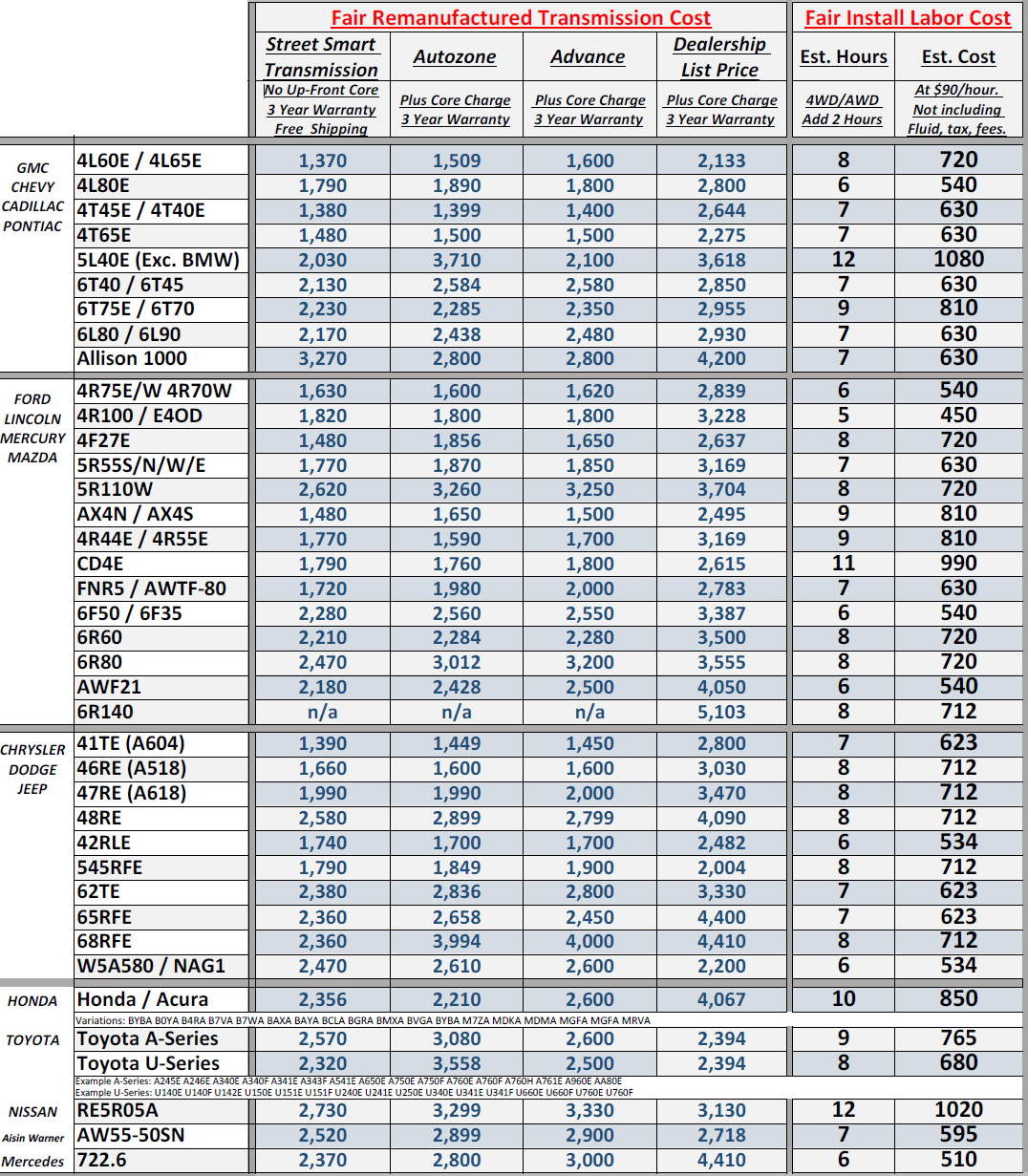Of the top of my head, you have a couple of issues that seem to be bothering you.
- Poor performance in 2nd and 3rd gears
- To flush or not to flush…that is really not a question
As to the performance of 2nd and 3rd gears, there are several distinct possibilities, each of which requires some investment.
Most would assume that the torque converter is the problem and leave it at that. However, if you think of the transmission as a big chain whose strength depends on each preceding part, you would see that a failing torque converter, since it is at the start of the chain, would take out all of the gears in the transmission in pretty short order.
Since the torque converter sets up fluid flow throughout the transmission you can see that without it working properly, you would have an extremely large white elephant on your hands. The tranny wouldn’t work and if it did the performance from all gears would likely be so poor that you’d have it in the shop yesterday.
Moving on from the torque converter, you come to the next steps in the chain, the impeller (the turbine that the torque converter turns), valve body, gears and bands/clutches.
Again, since the performance is just jerky, I don’t think the problem is either the impeller as the gears do work, but with issues. I don’t think the problem is in the gearing either.
Where the problem may be is in the clutches/bands, which may be slipping a bit, or it is in the valve body which may have some lazy springs that keep the check valves from closing crisply and cleanly. Many times, in fact, the valve body is overlooked. The reason is that it is assumed the valve body is a device that works correctly 100 percent of the time.
That is certainly not the case. The valve body relies on a rather long set of runners through which the transmission fluid is directed. A small check valve — a spring-loaded ball-bearing — opens when the transmission is seeking a certain gear. If the spring is lazy, then it may appear that the gear is slipping or jerking a bit. It does take some work to get to the valve body — $2,150 with parts and labor — because your tech will have to get inside the transmission to do the work. And, each runner — channel — must be cleaned and a new check valve assembly for each gear must be inserted.
I would definitely think that is a prime candidate that is causing your Toyo’s problems. Even cleaning the valve body and replacing check valves works out to save you thousands over a new rebuilt transmission.
Then, of course, the problem just could be in the solenoids for 2nd and 3rd gears. If the solenoids have become lazy or they are failing, then your Toyota would work in the manner you describe.
My suggestion is this: take the time to have a complete OBD-II diagnostic run. The codes generated should pinpoint the problem. Now, it is possible that you might have to swap in a rebuilt transmission which can be costly at $4,250 (repair pricing guides were changed recently to reflect higher hourly rates so transmission replacement costs have risen), but, I don’t think so. If you look into one of the subsystems I have mentioned I think you will find the answer, one that is less expensive than a rebuilt.
As to the flush, I am not one who recommends them. Normally, a flush works like this: a high-pressure line is attached to the transmission filler neck and then the drain plug is opened and a high-pressure air charge is forced through the transmission.
Of course, this does force all of the fluid out of the transmission, but — it’s sort of a big but, too — it also forces other things to slam throughout the transmission, as well. Normally, there’s a big slug of gunk and other stuff in the transmission filter. When the high-pressure charge hits the filter the gunk becomes a projectile that rips through the transmission damaging the delicate parts that are in its way. If there are metal filings they also rampage through the transmission, possibly causing damage. It is far better to just drain the transmission, remembering that there will be about one quart of fluid that remains. That fluid has to be drained by dropping the transmission pan cover and letting the rest of the fluid drain away. It is far easier on the transmission.

